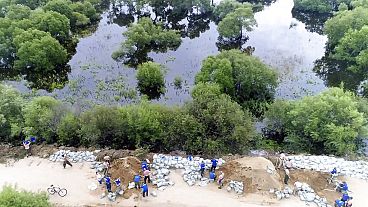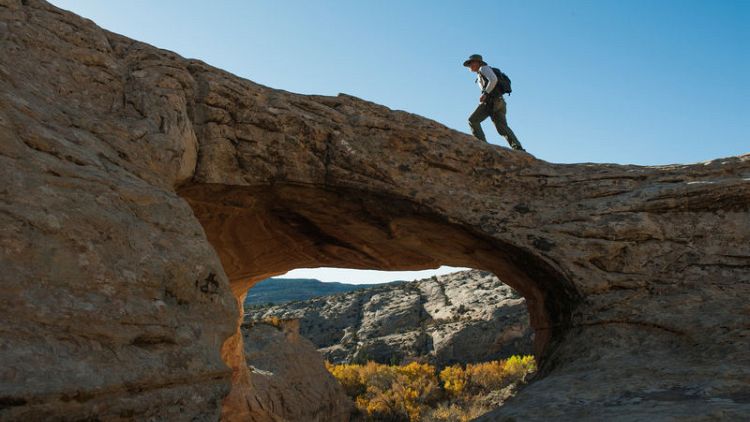By Valerie Volcovici
(Reuters) - The Trump administration on Friday released a plan for the newly reduced Bears Ears National Monument that it says would protect the Utah site's cultural resources, but some Democratic lawmakers and environmental groups said the plan would leave sacred sites vulnerable to destruction.
The Bureau of Land Management posted to the federal register the management plan for the Utah monument, which was created by former Democratic President Barack Obama in 2016 to protect Native American cultural and archaeological sites but reduced in size by 85% by Republican President Donald Trump in 2017 to open up the land to resource extraction, grazing, logging and vehicle use.
While U.S. national parks can be created only by an act of Congress, national monuments can be designated unilaterally by presidents and a century-old federal law meant to protect sacred sites, artifacts and historical objects.
"These plans will provide a blueprint to protect the awe-inspiring natural and cultural resources that make this monument nationally significant, while enhancing recreational opportunities and ensuring access to traditional uses," BLM Utah State Director Ed Roberson said.
Conservation groups and some Democratic lawmakers were quick to denounce the Trump administration plan, saying that it would leave the sacred sites and cultural resources that were protected in the original monument designation more vulnerable to destruction by opting for limited restrictions on offroad-vehicle use, while allowing rights of way for roads, cell phone towers and roads though sensitive areas.
"This plan recklessly weakens protections even for the land that remains in the monument, failing to protect important sites from threats like illegal ATV use, looting, vandalism and damage from target shooting - which would be permitted within monument boundaries under this plan," said Representative Ruben Gallego of Arizona, chair of the House of Representatives Subcommittee for Indigenous Peoples.
Earthjustice, an environmental group that is embroiled in a legal battle with the administration to restore the original Bears Ears National Monument boundaries, said the plan "fails to map out strong protections for priceless culture sites," citing how the plan allows the practice of "chaining" - clearing forest with chain pulled between tractors for wildfire protection and grazing.
"Bears Ears is not the kind of place for chaining thousands of acres of forest or stringing up utility lines. These are wild, sweeping monument lands," said Heidi McIntosh, managing attorney of Earthjustice's Rocky Mountains office.
Earthjustice, the Natural Resources Defense Council, several Native American tribes and other groups sued the Trump administration after he signed his proclamation to shrink Bears Ears in December 2017.
The case is pending at the U.S. District Court in Washington, D.C., where the administration had filed a motion to dismiss.
(Reporting by Valerie Volcovici; Editing by Leslie Adler)












